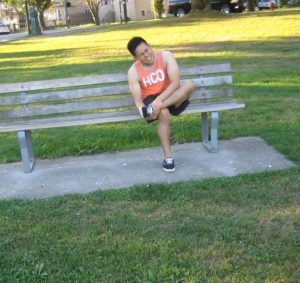CPR and first aid training courses have been gaining popularity in the US over the last several years. Awareness raising on cardiac disease and cardiopulmonary resuscitation is a long-term project by the American Heart Association and other similar cardiac organizations. Aside from seminars and annual reports of the health status of Americans, training courses in CPR incorporate skill and knowledge building regarding cardiac health.
There are many programs offered throughout the country, but none of them have better training than us. We are located in five states, over six cities. All of the locations have the same training programs available, at the same rates and with the same training fees. Schedules, of course, vary depending on the needs of our students.
Getting to know CVDs

The term CVD – meaning cardiovascular disorder – is a general term used to describe problems with the heart and blood vessels. An actual diagnosis is much more specific, such as coronary artery disease (CAD) and hypertension (HTN). CVDs are the leading cause of mortality in the US and all over the world. An estimated 1 in 3 deaths in men and 1 in 5 deaths in women are caused by a heart condition – a statistic that should incite pro-cardiac health actions in everyone, whether or not a person works in health care.
Coronary artery disease (CAD)
CADs are the leading cause of cardiac arrests in Americans. This condition is characterized by plaque build-up in the coronary arteries, the vessels that supply the heart with oxygenated blood. When a person has too much fat and cholesterol in his or her diet, deposits begin to form in the blood vessels. These areas also become more prone to the attachment of inflammatory cells, leading to plaque build-up. As the build-up increases in size, it narrows the area where blood flows – causing a decrease of blood delivery to the heart.
Stroke
People often mistake a stroke for a heart attack, or the other way around. In reality, the two conditions are very different. A heart attack happens when the blood supply to the heart is suddenly cut off. A stroke on the other hand is a cerebrovascular condition, where the blood supply to the brain is suddenly cut off due to an obstruction in the cerebral vessels. Strokes are as dangerous as heart attacks, because the brain can only survive up to 10 minutes with oxygen before cerebral tissue begins to die. Severe headaches and changes in levels of consciousness are symptomatic of this condition.
Peripheral arterial disease
PADs are vascular conditions where the arteries in the extremities become obstructed. The most commonly affected areas are the lower extremities. It is usually characterized by pain in the legs while walking, in the calves, thighs, and calves. When this disease becomes severe, it can manifest as tissue death in the feet (such as the toes).
Sign up for CPR and first aid training today.